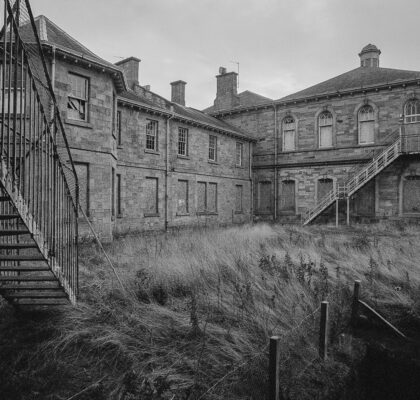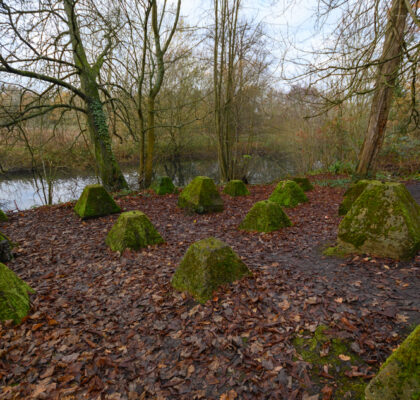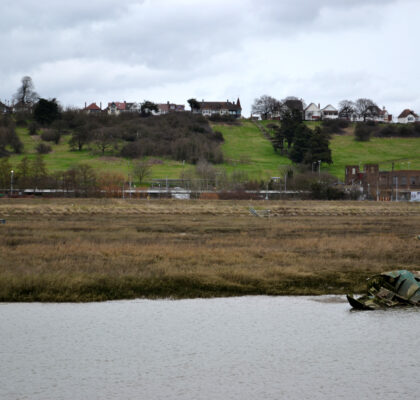
It’s BTP Liam here to tell you about AGES Archaeological Society and the adventure that we had when we joined them this August. Based in Hadleigh and with links with the Thundersley and Hadleigh Community Archive, AGES is a society which seeks to survey what lies from the lives and times of civilisations hundreds of years before our own, sometimes buried only a few inches under our feet. Thanks to Terrence Barclay I joined them to see what the fuss was all about with accomplice Alex Evans for a two-day metre-squared dig, aided by Chris Roberts after bringing him along the next day after a night out we had in Southend! We are really grateful for AGES for letting us get involved, we really did learn a new skill, learning the correct way to do an archaeological dig following the Cambridge method of reporting findings. We even learnt about the mystery of dowsing rods, which have been used for thousands of years by humans to find water and other things under the ground, although have never been explained by science. We would also like to thank the house owners for their kind hospitality.
When me and Alex arrived on the first day, we were greeted by the society and the owners of the house whose garden the dig was taking place in. There were three main steps to the dig. On the lawn was the actual pit, at this time only a few inches deep. Nearer the entrance was a large tarpaulin sheet with heaps of earth on it – what had been dug up. This was where earth was sieved after it was taken from the pit just to check for any missing finds. After finds had been found, they were taken to the bench where they were washed and cleaned, sorted into piles of different materials. For example, we had piles for bone, metal, ceramic, brick, concrete etc. Whilst digging, you would only dig 10cm down per layer, called a ‘context’. The idea is that by thoroughly scouring each context, you essentially ‘scan’ through the historical eras of time as you dig down. However, it is important to remember there may have been pits dug, or pipelines infilled over the years which may confuse this, but you should be able to see this by shadowed or lighter areas in the soil. Each context has to be levelled flat so it provides a ‘snapshot’ of what was hidden at that certain depth in the soil.
The first few contexts were littered with domestic waste, probably from a previous incarnation of the garden. The house dates back to maps from roughly one-hundred years ago, so we can imagine the garden saw reworking, or recovering over the years. We found a brick wall cutting across the corner of the pit just under the surface, so we can assume it was an old garden wall that was covered at a later date. It could’ve dated anywhere between Edwardian to Post-War era. It is likely the wall was a lot higher but it was demolished and only as the base was left standing. In these early contexts we found plenty of domestic waste from red brick (possibly from the local brickworks) to cement and nails, to bones with signs of butchery and lots of charcoal and coal. The latter two tell us the rural simpler way of life people living here would have led. We know that this area, just north of the Hadleigh Downs, was primarily farmland and so households there would’ve possible been isolated and accustomed to simpler ways of living involving butchering livestock for food, and cooking them on fires from which the charcoal was disposed of in the garden. This is a great example of how simply digging in the garden, and carefully sorting through the finds, can tell us so much about the social history of a place – and a whole area. Local historic knowledge of course helps to contextualise this, so you can piece together the puzzle and discover exactly what happened in one spot in the lives of those before us.


Carrying on with the dig we found an area in the centre where there was a lot of tin foil – probably from the seals of bottle tops. We also found a strange ceramic green semi-sphere with a screw-hole on the flat side. We were unable to identify this, but we did also find the legs of a lead tin soldier who appears to be a prone Boer War-era soldier firing a weapon from a prone position. We could tell this by the shape of his helmet and his tunic uniform. By sheer luck I managed to find the top half of him laying by the side of the pit under one of the nails running around the pit’s edge to hold the string in place marking the 1mx1m area.
As we dug further down we noticed a marked change in the colour of the soil. It was definitely becoming lighter and of higher clay content as it became richer in colour. The soil became less dry and loose too, and we found orange clay flecked with sand and pale grey clay. This was ‘the natural’ soil of the land prior to what man had put in place in recent history. At this stage we were finding little but charcoal and chalk; of course we had now reached an area below the domestic period of this ground’s use, predating the house. Nothing of interest could be found here until I spotted a tiny square of mud-coloured pottery whilst sieving the excess. Recognising its grey colour with flecks of shell I had seen before in some of BTP Joe’s finds, I thought this sherd could be medieval. Showing it to Terry and the others I was right, and I must say I am quite proud of this sherd that nearly went completely unnoticed in the excess earth pile! It looked like nothing more than a tiny square of earth at first. This was really important as it told us that the area had been used at some point by those alive during the Middle Ages, at least 500 years ago! However, because it was such a small fragment and we only found one, we speculate the land was probably not used much at this point in history; maybe the ground was ploughed as farmland briefly before it was abandoned for better soil elsewhere near. The land probably stayed fallow like this right up until the house was built around the turn of the 20th century.
Terrence showed us exactly how to survey and record each context using the Cambridge official method. We filled out sheets for each context with a top-down sketch of each layer and what could be seen in it, and at the end we did the same for a side plan of the pit’s sides. You could see the soil changing colour as it went down too. The colour of each layer was recorded as well as written notes. The finds with this report would then be sent for analysis at Cambridge University, with each layer’s finds bagged up.

At the end we then filled the pit in with the soil kept in a pile for each layer, roughly how it come out. The lawn was then replaced and you could almost not tell that a 50cm pit had ever been dug there. We all really enjoyed the trip, it was fascinating and good fun too. The rain on the second day made it a little strenuous, but we all made a good effort and it was a really different way to spend an afternoon. None of us had any experience with archaeological digs before, and although of course archaeology of the above-ground variety is an interest of mine, Alex and Chris were completely new to it and found it equally as good fun. We will certainly be attending digs in future.
AGES Archaeological Society has a new website which you can visit here http://ages-aha.co.uk/ to find out more and see some of their more substantial finds. As well as digs they meet in Hadleigh United Reformed Church hall on the last Tuesday of every month from 7.30-9.30pm where they often have guests talking about certain interesting topics surrounding our past. Anyone can attend for £2.50, and you can join as a member of the society for £15 (or for your whole household for £20). All ages are welcome!




